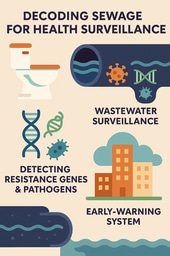STIM-HD: Exploring Neuromuscular Electrical Stimulation for Sarcopenia in Haemodialysis Patients
Published in Healthcare & Nursing, Biomedical Research, and General & Internal Medicine
The problem: sarcopenia in dialysis patients
Chronic Kidney Disease (CKD) is an illness where the kidneys gradually lose their ability to work properly. It is relatively common, affecting about 10-12% of the adult UK population. Sometimes, when kidney function becomes so low, people have to commence dialysis, which replaces the function of the kidney. Whilst this is lifesaving, it has a significant impact on people’s wellbeing and their ability to perform everyday tasks, as people say they notice their muscles become smaller and weaker – a condition known as sarcopenia. These symptoms are not only troubling to the individual, but having sarcopenia means the person has poorer health in the long-term. With exercise often impractical for this population, could a simple, widely available device hold the key to reversing muscle loss in dialysis patients?
Why Neuromuscular Electrical Stimulation (NMES) might work
Traditional exercise offers significant benefits, including for people on dialysis, however a large number of people do not want to exercise, or are not well enough to do so. Therefore, it is important to find an alternative intervention capable of delivering some of the same benefits as exercise, but that is easier for people to manage.
Neuromuscular Electrical Stimulation (NMES) is a well-tolerated rehabilitation technique that increases muscle mass and strength. The device uses small electrical impulses to activate muscles via electrodes placed on the skin, mimicking the effects of exercise.
NMES devices are already available in high street stores and used in rehabilitation for other conditions, however their potential to benefit dialysis patients remains underexplored. The STIM-HD study aims to determine whether three months of NMES during dialysis can improve muscle strength, offering a new avenue for supporting patients with sarcopenia.
The STIM-HD study: what are we testing?
The study will recruit 228 haemodialysis patients across three centres in the East and West Midlands. Participants will be randomly assigned to either receive NMES during their dialysis sessions or continue their usual care. Before commencing the study, participants will undergo assessments of muscle mass, strength, physical function, activity levels, and quality of life.
The NMES intervention will involve three weekly sessions during dialysis, gradually building up to 30 minutes as tolerated. Participants will control the intensity of the electrical impulses, increasing it over time to a level they find comfortable.
After three months, the same assessments will be repeated to measure improvements and determine how well the benefits are sustained over time.
The importance of Patient and Public Involvement (PPI)
Patient involvement is central to the STIM-HD study. Fez Awan, the study's Patient-Co Applicant and PPI Lead, brings a wealth of lived experience. Born with kidney failure, Fez has undergone three kidney transplants and experienced all forms of dialysis, giving him a deep understanding of the challenges dialysis patients face.
In relation to sarcopenia, Fez reveals it “can be devastating for kidney patients; it adds more pressure and burden on us and our loved ones. Being on dialysis is difficult enough, and losing strength and not being able to do simple things can also affect our mental wellbeing”.
Fez’s lived experience fuels his mission: to help transform dialysis care and ensure it is inclusive and effective for all. His insights are a compass for the STIM-HD study, ensuring the aims and objectives of the study remain focused on issues that truly matter to dialysis patients.
“What excites me about the STIM-HD study is its potential to give patients a sense of control. By allowing study participants to adjust the intensity of the NMES, it feels like we’re part of the solution - not simply subjects or guinea pigs”.
Fez feels this could build trust and inspire more patients to take part in future research, stating he is “hopeful and encouraged that this study could be a step towards helping dialysis patients with sarcopenia”.
What could this mean for patients?
If successful, the STIM-HD study could transform rehabilitation for dialysis patients, offering a practical way to regain muscle strength, improve well-being, and enhance quality of life. This research could also support integrating NMES into clinical care guidelines, making it a valuable tool for addressing sarcopenia in dialysis patients.
Who is organising and funding the STIM-HD study?
The study is organised by the research team at the University of Leicester’s Department of Cardiovascular Sciences. The research is sponsored by the University of Leicester and funded by the National Institute for Health and Care Research (NIHR) through the Efficacy and Mechanism Evaluation (EME) Programme (ref: NIHR158852).
Next steps
The STIM-HD study was reviewed and granted a favourable opinion by the Wales REC 3 Research Ethics Committee in November 2024 (ref 24/WA/0339). Recruitment is due to commence in April 2025, with follow-up assessments to finish in late September 2027, followed by publication of results in early 2028.
Contact details
If you have any questions about the STIM-HD study, please contact the central team via email: STIM-HD@leicester.ac.uk.




Please sign in or register for FREE
If you are a registered user on Research Communities by Springer Nature, please sign in